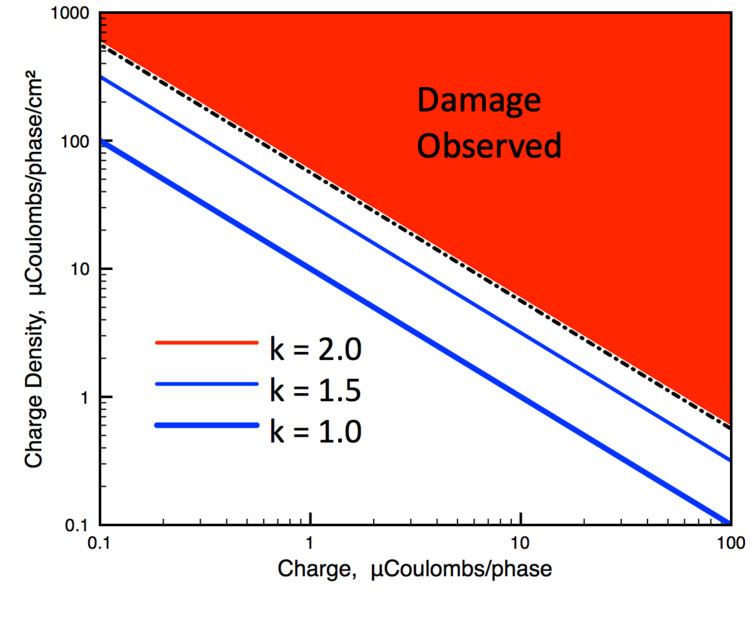 | ||
The Shannon criteria constitute an empirical rule in neural engineering that is used for evaluation of possibility of damage from electrical stimulation to nervous tissue.
Contents
The Shannon criteria relate two parameters for pulsed electrical stimulation: charge density per phase, D (μCoulombs/(phase•cm²)) and charge per phase, Q (μCoulombs/phase) with a dimensionless parameter k:
or, alternatively:
According to these criteria, stimulation parameters that yield k ≥ 1.85 (the lowest value where damage was observed in the two studies reported in the original Shannon publication) could cause damage to the adjacent nervous tissue. Currently, this empirical law is applied in neuromodulation for development of implants for cortical, cochlear, retinal, spinal cord and deep brain stimulation. Shannon categorizes the relationship between stimulating electrode and target neural tissue as either Near Field, Mid Field, or Far Field, and discusses how equation parameters may be chosen in each case.
Limitations
The data on which the Shannon model is built are restricted to experiments performed in cat cerebral cortex with 8 hours of stimulation at 50 Hz using surface disc electrodes of 1 mm² or larger under light anesthesia.
Change of standards
Charge densities exceed traditional damage thresholds in the use of current microelectrodes, and new standards may be made.
